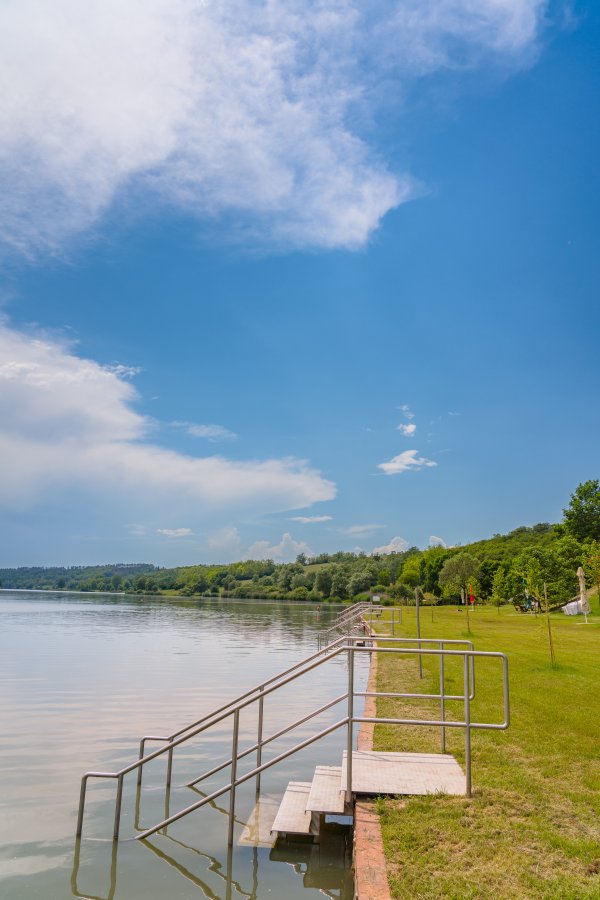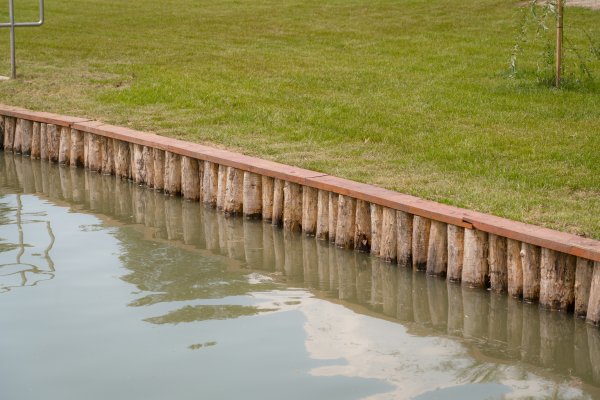In 1994, in Szálka, the idea was formulated to create a beach with open water in the 67 ha lake in order to boost tourism. Once the conditions were met, the beach started operating in 1999 and is still operating today. During the development of the beach, an important aspect was the preservation of the existing natural values and their care. The settlement became more and more attractive for the people living in the surrounding settlement and more and more people came to Szálka, the settlement began to boom, and tourist traffic increased.
More and more accommodations were built in private houses, within the framework of village tourism. New catering units and boarding houses were established to serve the emerging needs, which operate well and profitably to this day. Organized children's camps have also started in the settlement, and there are currently three children's camps in the settlement.
The favorable location of the settlement is located in the center of three neighboring towns, one of which is Szekszárd, the county seat of Tolna county. The attraction of the beach is large, many guests come to Szálka not only from the region, but from the entire country, but often from abroad as well.
The water of the lake and the beach is of high quality and crystal clear, which is why guests like it so much.
The development planned in the framework of the project was necessary because the water was constantly damaging the shoreline and washing the ground, thereby impairing the comfort of beach users.
With the establishment of coastal defenses and the biological removal of mud accumulated in the beach area, the stand was brought into a condition that meets today's expectations. It is once again attractive to guests, and with the help of the development, there is no need to expect any more soil encroachment in the future.
In addition to desilting, the most significant technical intervention was the construction of the Szálkai reservoir (beach) coastal protection work with wooden piles.
Detailed presentation of the implemented technical intervention:
Shore protection: 356.5 m of permanent shore protection was built in the area of the reservoir, in the subdivision 'C' of Szálka 043/6 hours, in front of the leisure center (also a licensed beach). Coastal protection ensures final wave protection, safe access for beachgoers to the water and also aesthetically demarcates the landscaped area. In order to protect the existing aquatic vegetation (reeds), the coastal protection is significantly divided. Coastal protection consists of two types of cross-sections, vertical and copper.
Characteristics of vertical coastal protection: Length 351.5 m; Level difference 1.0 m; The material is a row of burned piles of acacia wood, 15-20 cm in diameter, 2.5 m long; The row of piles is closed with a 20*5 cm planed pine board; Filter material terfil geotextile; Backfill local earth material; The width of the coastal working space is 10.0 m
Characteristics of the copper coast: Copper bend 1:5; Sand thickness 0.5 m; Copper edge 135.50 mBf; Copper foot 134.50 mBf; Sectional length 5.10 m; Beach length 15 m; Its material is river sand
Access to the water for beachgoers is ensured by the stainless steel (corrosion-resistant) steps, which were installed as a ready-made product (5 steps).
The 2 piers, with a 1.5*6.0 m walking surface, are used for mooring recreational watercraft (water bikes, plastic kayaks) and were installed as a ready-made product. Its material is also aged steel.
Sludge removal:
In the part of the reservoir in front of the leisure center, on an area of 2.65 ha, the sludge with an average thickness of 30 cm was reduced using biological methods.
The workflow:
Lake treatment with a natural biological inoculant in order to reduce the amount of organic matter and improve the quality of the water, 4 times (based on preliminary tests).
Application of limestone flour in order to reduce the pH and increase the growth of beneficial microorganisms, 4 times.
Carry out regular water tests, 4 times. Examination of general water chemistry parameters, supplemented by the determination of total organic carbon, total chlorophyll-a and cyanobacterial chlorophyll-a.
Sand spreading:
Coastal protection ensures beachgoers access to the reservoir bed, but under the soft mud to be demolished, there was a hard clay layer with an extremely slippery surface. The 10-20 cm thick layer of sand on a surface of 2.65 ha was intended to prevent this possibility of slipping.
The development of the stand has been completed, and we await our dear guests on the renewed beach with crystal clear water and a wonderful natural environment!


















